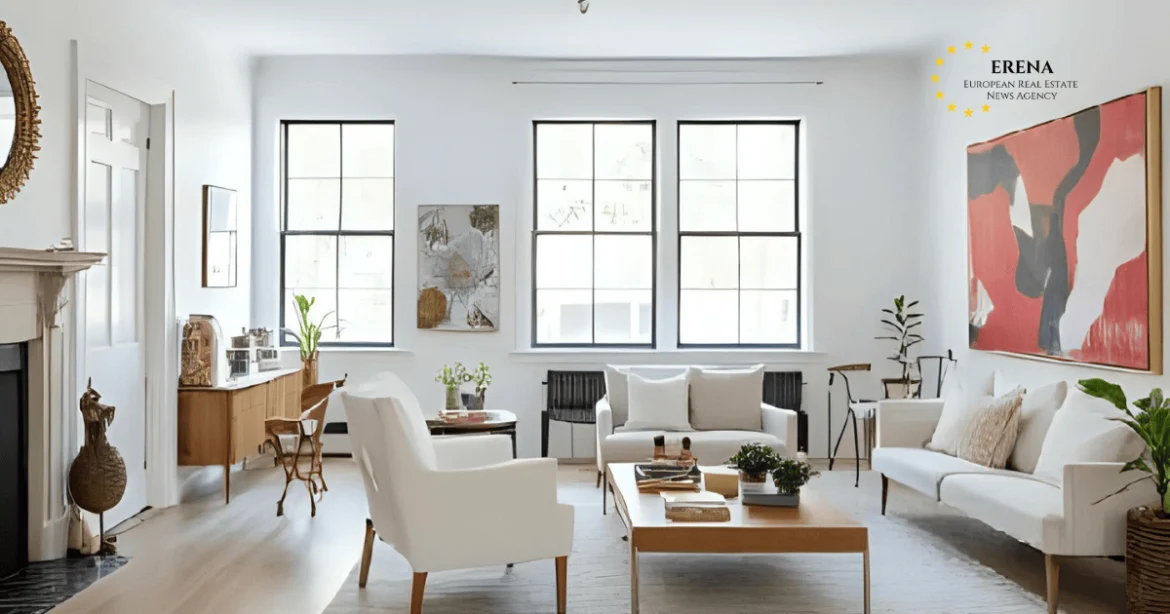The Upper East Side townhouse once owned by Real Housewives of New York City star Sonja Morgan has entered a new chapter. Fourteen months after its high-profile auction, the five-story residence at 162 East 63rd Street reopened in 2025 as a sober living home operated by Release Recovery, a luxury-focused provider of transitional housing for people in recovery.
From Auction Block to Recovery Residence
Morgan first listed the property in 2013 with a price tag near $9.95 million (≈€9.1 million). After years of reductions and failed deals, the house went to auction in May 2024 with no reserve price. The gavel fell at $4.45 million (≈€4.1 million), with the buyer’s premium bringing the total close to $4.98 million (≈€4.6 million).
Originally purchased by Morgan and her then-husband, J.P. Morgan heir John Adams Morgan, in 1998 for $9.1 million (≈€8.4 million), the townhouse became a backdrop for numerous scenes on Bravo’s RHONY. Its distinctive design, including a solarium, koi pond, garden fountain, wood-paneled library, and antique fixtures, made it one of the franchise’s most recognizable properties.
“It’s time to do me,” Morgan told Page Six after the sale, explaining that the upkeep of the sprawling townhouse had become a burden once her daughter left for college.
The Arrival of Release Recovery
By late summer 2025, neighbors noticed a new reality. The house had been converted into a sober living facility operated by Release Recovery, a New York-based company specializing in upscale transitional housing.
Release Recovery markets itself as a provider of “bespoke living” for individuals leaving inpatient treatment or seeking structured support in sobriety. Its residences typically offer 24/7 staff, case management, peer groups, family support, and access to therapy — all within a residential, non-clinical environment. While pricing for the East 63rd Street location has not been disclosed, industry analysts note that Release Recovery’s model often targets a high-net-worth clientele seeking privacy and premium services.
Neighborhood Reactions
Not everyone on the affluent block welcomed the shift. Local coverage in Page Six and other outlets reported that some Upper East Side residents were “mortified,” comparing the constant movement in and out of the townhouse to the busy concourse at Grand Central Terminal.
“It’s like Grand Central,” one neighbor complained, describing the flow of people in and out of the house.
Sonja Morgan herself expressed surprise at the conversion.
“I thought he was moving in with his wife,” she said when she learned that the buyer had instead turned her former home into a sober living residence.
Market Context: Townhouse Values Reset
The transformation also highlights broader trends in Manhattan real estate. Townhouse prices, once inflated by trophy-property premiums, have cooled amid higher interest rates and shifting buyer demand. Properties that once listed above €10 million (≈$10.9 million) are now trading at significant discounts.
On the Upper East Side, traditional townhouses still command €7 million to €20 million (≈$7.6–21.8 million) depending on condition, but homes needing renovation or carrying celebrity histories often sell for less. In this sense, the €4.1–4.6 million ($4.45–4.98 million) paid for Morgan’s property reflects both market reality and the willingness of institutional or corporate buyers to repurpose luxury assets.
Sober Living as a Growth Sector
At the same time, the use of high-end housing for recovery residences is on the rise. Industry observers note that discreet, small-scale sober living homes are increasingly favored over large, centralized institutions. For operators like Release Recovery, positioning in affluent neighborhoods adds both prestige and accessibility for clients accustomed to luxury living.
The model taps into a market where private inpatient rehab can cost €20,000–60,000 (≈$21,800–65,500) per month, while sober living residences provide a more flexible, medium-range option. By blending into residential communities, these homes offer structure without stigma, a factor advocates argue improves long-term recovery outcomes.
Balancing Community and Care
The debate around 162 East 63rd Street underscores the tension between neighborhood identity and the social need for recovery housing. Studies across U.S. cities suggest fears of collapsing property values near sober living homes are often overstated. In most cases, the presence of well-run facilities shows no consistent negative impact on surrounding prices.
Advocates emphasize that addiction affects families in every income bracket, and access to stable housing is critical for sustained sobriety. For residents of Release Recovery, the townhouse represents not just a prime address but a step toward rebuilding their lives.
A Shift in Symbolism
From celebrity showcase to auction discount to recovery residence, Sonja Morgan’s former townhouse has mirrored both Manhattan’s shifting real estate market and society’s evolving approach to treatment. For neighbors, the change may feel unsettling. For those inside, it is a second chance.
The story of 162 East 63rd Street is no longer just about reality television glamour or real estate speculation. It is about adaptation — of a home, of a market, and of a city constantly redefining how its most coveted properties are used.

